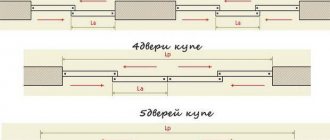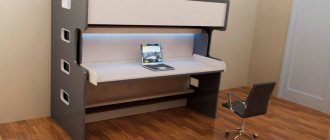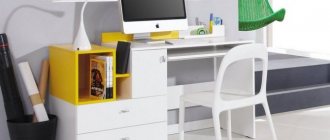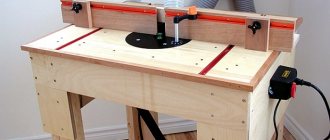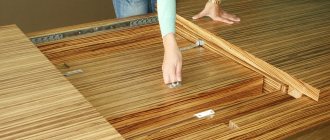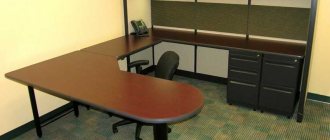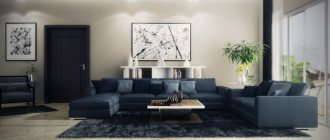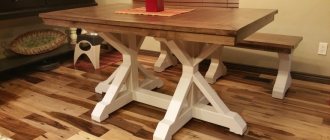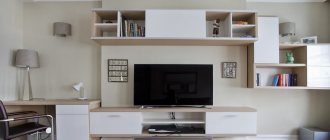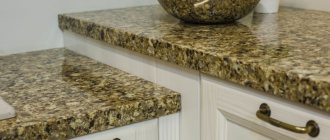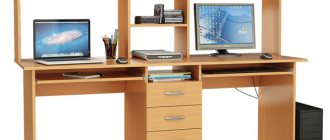Each characteristic of a tennis table - and there are many of them - is important for the quality of the game. This type of sports equipment is in very high demand today. Such popularity is due to nothing other than the ease of playing ping-pong and the large number of positive emotions that can be obtained by getting carried away by it. Among other things, table tennis is a sport in which serious competitions are held at the world level.
Let's see what characteristics amateur and professional tennis tables may have:
- Dimensions.
- Weight.
- Class.
- Color.
- Transportation system.
- Folding system.
- The material from which the countertop is made, etc.
Below we will look at each of the above options in more detail.
What are the dimensions of a standard tennis table?
There are three main variations in the size of the device in question:
- A standard tennis table is a fairly large structure, which, however, can be transported relatively quickly and easily if there is a special modern folding system. This device is 76 centimeters high, 274 centimeters long, and 152.5 centimeters wide.
- Mini tennis table is usually used by children. Its parameters are: length 136 cm, width 76 cm, height 65 cm.
- There is also a middle option (midi tables). Their dimensions are 76x105x186 cm - height, width, length, respectively.
It is quite possible to order a table according to individual sizes, but you will still need to find a company for this. And, of course, the cost of such a design will be much higher than the prices set for standard products.
Requirements for indoor ceilings
The minimum ceiling height must be at least 2.7 m, but some requirements for halls for competitions indicate a height of at least 5 m. The premises must be well lit - lighting standards are specified in the current rules and GOST in relation to the equipment of halls for sports events. The playing surface must have an illumination of at least 1000 lux, the rest of the hall - at least 500 lux. This requirement applies to the venues of Championships, Championships, World Cups, Olympic and Paralympic Games. For regional competitions, illumination of 600 lux is allowed.
Tennis table weight
The weight of a tennis table is determined, as you can quite easily guess, by the mass of materials from which it is made. To make the classification that we present below clearer, we explain in advance: professional tables have more weight due to the fact that their tabletops are thicker than their counterparts. In addition, the product units in question must have high stability - this predetermines the use of a durable, serious supporting structure. So:
- The weight of a professional table varies between 100-160 kg.
- Club models can weigh about 70-110 kg.
- Amateur tennis tables weigh 50-70 kg.
But don't be afraid of the above numbers. Manufacturers have taken care of user comfort - most modern models have a convenient assembly/disassembly and transportation system. Therefore, even the largest table can be handled by only 1 person.
Tennis table parameters: class
Some parameters of a tennis table together determine the class of the structure. Considering this category of goods from this angle allows you not only to purchase the right model, but also not to overpay out of ignorance when it comes to purchasing goods for home, non-professional use.
So, we can distinguish three classes of standard tennis tables:
- The first one is professional. Such products weigh about 100-160 kg and have a relatively thick tabletop of 25-30 mm. The edge of the lid is necessarily equipped with an edging. The parameters of a tennis table of this class must comply with the standards set by the ITTF. Such models are usually used in competitions.
- The second is club (semi-professional or training). The average weight of models in this class is 70-110 kg. The thickness of the playing surface varies between 19-22 mm. Such models are widely used by experienced amateurs, as well as professionals during training between championships. Often tables of this class can be found in sports and entertainment establishments.
- The third class is amateur. The tabletops of these products have a thickness of 16-19 mm. These products rarely weigh more than 50-70 kg. Easy and quick to assemble and relatively easy to transport. Such products are recommended for home amateur use.
The manufacturer increases the durability and reliability of the tennis table by equipping it with steel edges.
Place for the game and its equipment
Of course, it is best if certain days and hours in the gym are allocated for the table tennis section. But not all physical education teams have a gym, and therefore they inevitably have to carry out the work of a number of sports sections in rented premises, which are sometimes so far from the place of work that not everyone wants to go to the section’s classes. But most sports fans will come to the table tennis table - to the sports ground, located right next to it (in the summer - in the yard, in the winter - in the red corner or just in one of the rooms).
Even in a small room, you can carry out the work in such a way that everyone will immediately feel the sporting nature of table tennis. This depends on the culture and organization of the section’s work.
Table tennis, like any other sport, can be harmful to those involved if classes are conducted in unsanitary conditions, in a stuffy, dusty, poorly lit room, in non-sports clothing, or without the correct dosage of training.
Do not hesitate to spend a few minutes to clean and thoroughly ventilate the room before the start of training; do not allow players to play if they have forgotten their slippers; demand that students come to the table only in neat, well-fitted sportswear.
The best sports suit for table tennis is the usual light suit of an athlete: shorts, a half-sleeve, woolen socks and tennis rubber slippers.
The schedule of classes, the names of the room attendants, the sports calendar and tables of competitions, the schedule for preparing and passing the GTO standards, do not stick any simple announcement haphazardly on the walls, but hang it on a special notice board of the section, writing them beautifully and clearly in ink. First of all, maintain sports discipline in the room yourself, and then you won’t have to explain to random visitors who enter classes in coats and galoshes that people here are engaged in physical education and they need to go to the cloakroom to undress.
Cleanliness and order in the classroom, high culture and organization in the work of the section are of great educational importance and are inextricably linked with the quality of educational work; Therefore, wherever classes are held, compliance with these conditions is absolutely mandatory.
Depending on the scale of the competition, the rules provide for the following minimum dimensions of the playing area for installing one table: for competitions of physical education groups and city competitions 7.75 X 4.5 m; for republican competitions 10.75X5 m; for all-Union competitions 13.75X6 m. The height of the room for all-Union competitions must be at least 3.75 m.
The length of the room is 7.75 m - the minimum allowable, since only 2.5 m is left for running backs on each side of the table and a further decrease in this distance will affect the playing technique.
At competitions, playing on a stone floor, on a floor covered with linoleum or carpet is unacceptable; The parquet floor should not be rubbed to shine.
It goes without saying that in order to avoid injury, the floor surface must be level, without thresholds or loose parquet flooring.
At large-scale competitions, games are played simultaneously on several tables, so a large, well-equipped room is required. It is necessary that there are locker rooms, warm showers, and a wardrobe for participants and spectators; We also need utility rooms for the work of the panel of judges, for installing a warm-up table, etc.
The playing area is usually separated from the Spectators by tight ropes, otherwise if there is a large crowd the audience will interfere with the players. To prevent the balls from rolling too far, the playing area of each table is limited by special dark-colored barriers 0.5 m high.
The placement of tables indoors should create maximum convenience for players and spectators. In particular, it is necessary, if possible, to provide separate passages to the table for players and to seats for spectators, so that exits for meeting and movement of spectators do not interfere with the players.
A few words about the features of outdoor playgrounds. The main requirement for such sites is the presence of natural or artificial protection from wind and rain.
The location for setting up the site can be a section of the yard protected from the wind, an open or glazed veranda, a shell for an orchestra, a specially equipped light pavilion with a canopy from rain and direct sunlight, a quiet area in the park with backgrounds made of fabric or greenery.
If the table is installed on a platform, then the flooring must be made of thick enough boards that would not bend when players jump. It is quite acceptable to use earthen soil that is carefully leveled and compacted. In this case, so that the table legs do not spoil the soil, and the table stands strictly horizontally, it must be installed on special support boards made of thick planks, recessed flush into the ground.
- Lighting
- Inventory
Tennis table color
The color of the tennis table may vary. First of all, professional class products stand out. The ITTF allows those models in which the lid of a standard tennis table is green or blue and must be matte so that glare does not disturb the players.
As for amateur and training products, everything is a little simpler. Firstly, they can have either a glossy or matte surface. More often, the second option is found - the first is preferable for exhibition halls, where shine should attract attention. The covering of tennis tables of the considered classes can be of different colors (this is especially true for all-weather products): gray, green, brown, blue, etc.
All-weather table for outdoors and cottages
After assembling the tennis table, all elements must be primed.
If plywood was used for the tabletop, then additional painting of the playing surface will be required.
Before applying paint, the surface must be cleaned . It is recommended to paint in two layers (allow the first to dry before applying the second layer) and use matte paint to prevent glare on the playing surface.
After painting, the surface must dry, which will take at least a day .
At the final stage, markings are applied to the table. To do this, a white stripe, the thickness of which is 20 mm , is used to edge the playing field. The playing field itself is divided in half by a white line, the thickness of which should be no more than 3 mm .
Tip: to apply markings, use masking tape and spray paint.
Tennis table design: folding and transport systems
The design of the tennis table of the modern model range allows it to be easily transported and folded even by 1 person. Moreover, you can find systems that can be easily operated even with one hand. Special clamps allow you to secure the position of the product both unfolded and folded.
The wheels are made of high-quality materials, which makes it possible not to worry that after a couple of years they will fail.
Tennis table material
The material for a tennis table should be environmentally friendly, harmless to users, durable and guarantee a good rebound of the game ball. The quality of the product as a whole, as well as its individual elements, must be confirmed by certificates, which the client can freely obtain from the distributor.
The durability and reliability of a tennis table, as a rule, is ensured by materials such as:
- Melamine.
- Plastic.
- Aluminum.
- Chipboard/MDF/LDSP.
- Waterproof plywood.
- Steel and others
If you want to get a high-quality and practical ping-pong table, call ZonaSporta. Our online store is a profitable place to purchase various categories of sports equipment.
What can you make a billiard table from?
A billiard table is a very complex product, it is a luxury item. The player can lean on the tabletop or put his entire weight on it, so the table must be heavy and durable. It should not vibrate or warp. The ideal dimensions would be: height - 80 cm, length - 2 m, width - 1 m.
The product consists of a frame, tabletop, base of the playing surface, supports, sides and pockets.
The billiard table has its own requirements:
- strength and reliability;
- mobility;
- be able to transform into a tennis or dining table.
The product is made from quality material. Previously, solid wood was used: oak or beech. For a cheaper option, they used pine. From the legs to the tabletop, one type of dense wood was taken.
The best materials for making countertops and sides are mahogany, ash, oak, and pine. The tabletop can be made from a solid stone slab, concrete, metal, plastic and chipboard (chipboard with a facing film based on paper and melamine resin) with a thickness of at least 20 mm, or more.
Chipboard table top
There should be no cracks on the chipboard sheet. The main condition for the product is a flat surface. It quickly wears out and becomes deformed due to the bounce of the balls. The thicker the sheet, the better.
Plywood table top
Plywood can be a cheaper option than stone or timber. It is better to use birch plywood with a thickness of at least 24 mm, which can be coated with water-based acrylic paint in 2-3 layers. This will improve the moisture resistance of the plywood.
Laminated plywood
The material is laminated with non-flammable melamine. Laminated plywood does not warp or bend during use. From this material you can make a tabletop solid or split. Can be used outdoors and tolerates temperature changes well.
The base plate of the product consists of three or five parts (depending on the size of the field), which are connected using threaded ties. The seam between the slabs is carefully puttied, the surface is leveled so that the joints between the slabs are invisible.
If you run your palm over the countertop, the joints should not be felt.
Base material
The base can be made of different materials. The main thing is that it is resistant to damage.
The base material for the product can be:
- The natural stone is Ardesia slate. It is durable due to its slate structure. A falling ball weighing 290 grams will not leave dents or cracks on the slab. It has an ideal surface for rolling out balls; damage that may occur during operation can be easily eliminated.
- Made from synthetic granite - synthetic granite. A composite material based on marble chips bound with epoxy resins. Has the property of crumbling.
- It is more difficult to obtain a slab of the required size and thickness from marble. Marble is susceptible to damage and difficult to polish.
- Made from laminated chipboard (laminated chipboard). The big advantage of a slab made of this material is its low weight, the minus is increased background noise. Chipboard wears out quickly.
A good foundation must withstand a considerable load of weight without changing its geometric parameters.
